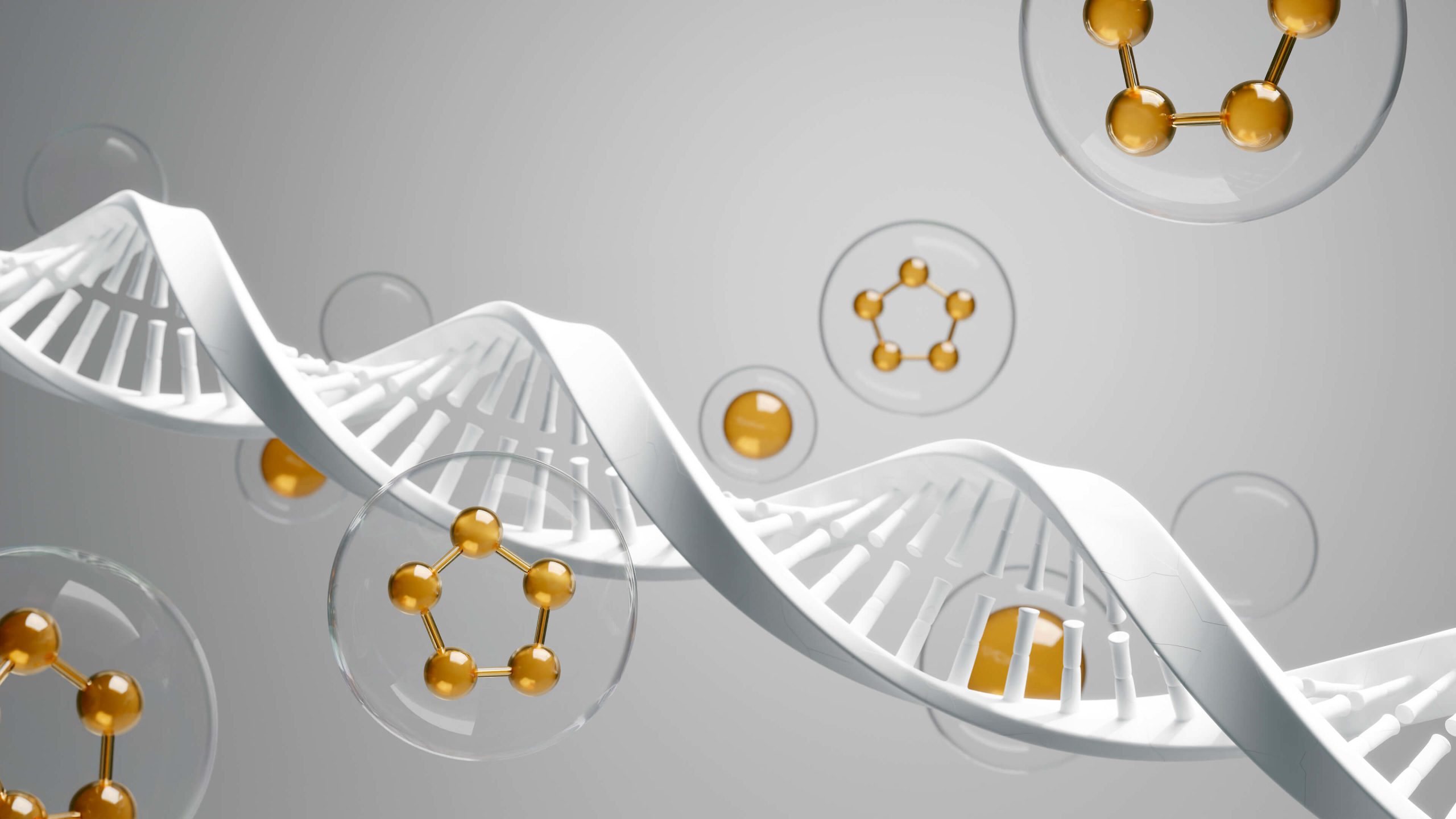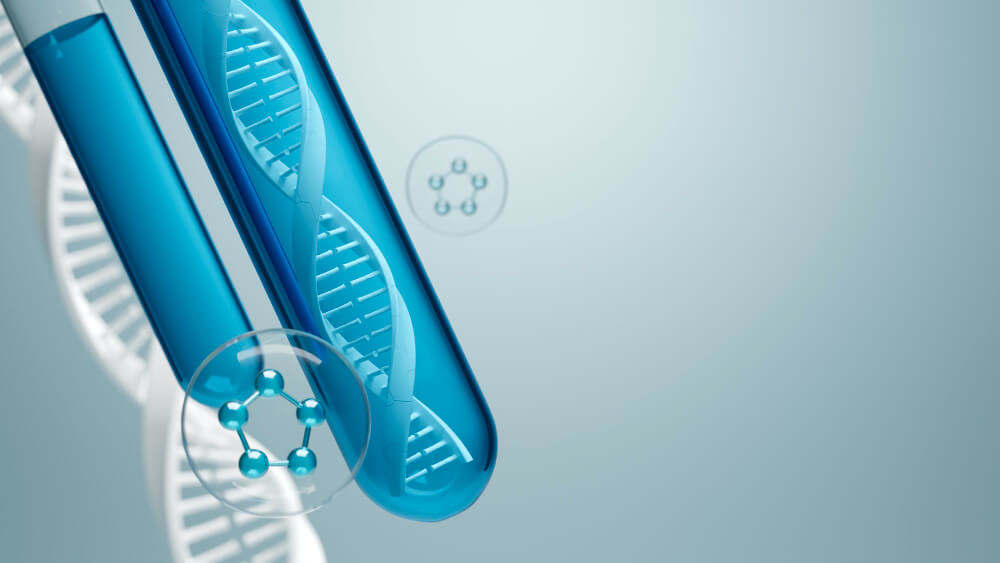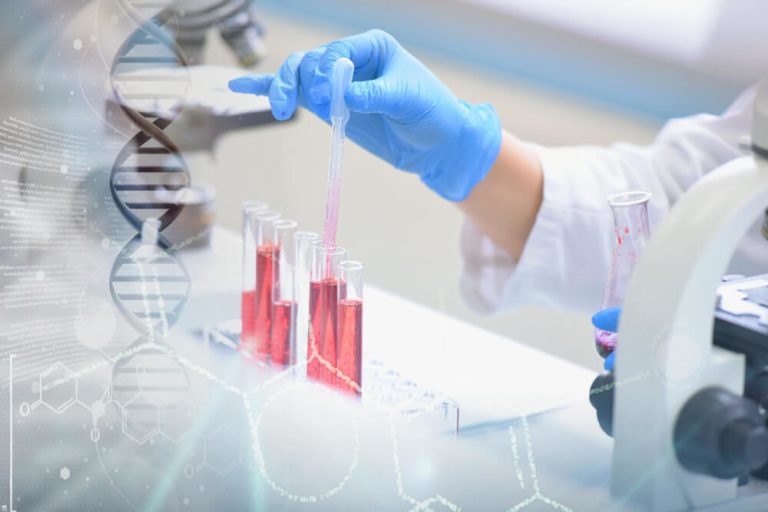Beyond the Fountain of Youth: Your Definitive Guide to Longevity Medicine
For centuries, humanity has been captivated by the idea of extending life. We’ve told stories of mythical fountains and magical elixirs, all aimed at cheating death and stopping the clock. But what if the goal wasn’t just about adding more years to your life, but more life, health, and vitality to your years? This is the revolutionary shift at the heart of a rapidly advancing field of healthcare.
This modern quest is not about finding a mythical cure for aging. Instead, it is a data-driven, scientific, and deeply personalized approach to health. It seeks to understand the underlying mechanisms of aging and intervene proactively to delay, prevent, or even reverse age-related decline. Welcome to the world of longevity medicine, a practice that redefines what it means to grow older.
The core distinction it makes is between lifespan and healthspan. Lifespan is simply the total number of years you live. Healthspan, however, is the period of your life spent in good health, free from chronic disease and disability. The goal of longevity medicine is to make your healthspan equal your lifespan.

What Is the Core Philosophy of Longevity Medicine?
The fundamental philosophy is a pivot from a reactive to a proactive model of care. Traditional medicine often acts as ‘sick care’, intervening only after a disease has manifested. You get a diagnosis, and then you receive a prescription or a procedure to manage the symptoms.
Longevity medicine flips this script entirely. It operates on the principle of prevention and optimization, aiming to keep you out of the doctor’s office for sickness. It uses advanced diagnostics to identify risks and dysfunctions long before they become full-blown diseases.
This approach is deeply personalized. Your genetics, lifestyle, environment, and unique biochemistry are all part of the equation. There is no one-size-fits-all pill or plan; instead, strategies are tailored to your individual biology to maximize your potential for a long and healthy life.

How Does It Differ From Traditional Healthcare?
Imagine your body is a high-performance car. Traditional healthcare is like taking your car to the mechanic only after the engine starts smoking or a tire blows out. The mechanic fixes the immediate, obvious problem to get you back on the road.
Longevity medicine is like having a dedicated Formula 1 pit crew. They are constantly monitoring every system in the car, from engine performance and tire pressure to fuel quality and aerodynamics. They make tiny adjustments and perform preventative maintenance to ensure the car runs at its absolute peak performance and never breaks down during the race.
This is achieved through the use of comprehensive biomarkers. While a standard physical might check your cholesterol and blood pressure, a longevity workup dives much deeper. It looks at markers for inflammation, metabolic health, nutrient levels, hormonal balance, genetic predispositions, and much more. The goal is to create a complete, high-resolution picture of your current health and future risks.
Ultimately, the difference is in the objective. Traditional medicine aims to move you from sick to ‘not sick’. Longevity medicine aims to move you from ‘not sick’ to ‘thriving’ and keep you there for as long as possible.

What Are the Scientific Pillars of Aging?
To effectively intervene in the aging process, we first need to understand why it happens at a cellular and molecular level. For decades, scientists believed aging was simply an accumulation of random wear and tear. Today, we have a much more sophisticated understanding.
Researchers have identified a set of interconnected biological processes known as the ‘Hallmarks of Aging’. These are the fundamental drivers of the physical decline we associate with getting older. They represent specific areas where our biology begins to fail over time.
These hallmarks include things like genomic instability, which is damage to our DNA. They also include telomere attrition, the shortening of the protective caps on our chromosomes, and mitochondrial dysfunction, where the power plants of our cells become less efficient. Other key hallmarks are cellular senescence, the accumulation of ‘zombie’ cells that promote inflammation, and altered intercellular communication.
Understanding these processes is what gives longevity medicine its power. By targeting these root causes, we can potentially slow down the entire aging process, not just one of its symptoms. The depth of the scientific understanding of these processes is constantly expanding, providing new targets for intervention.

What Key Areas Does Longevity Medicine Focus On?
With a clear understanding of the ‘why’ behind aging, longevity medicine employs a multi-faceted approach to address these root causes. It’s not about a single magic bullet but a synergistic strategy that targets health from multiple angles. This comprehensive plan is often referred to as a ‘five-pillar’ approach.

Can Nutrition Really Extend Your Healthspan?
Yes, profoundly so. What you eat is one of the most powerful levers you can pull to influence your health and aging trajectory. But the longevity approach to nutrition goes beyond the basic food pyramid. It focuses on how food signals your body at a cellular level.
Concepts like caloric restriction and intermittent fasting have shown significant promise in laboratory settings and human studies. These practices can trigger powerful cellular cleanup processes like autophagy, where your cells remove damaged components and recycle them for new parts.
Dietary composition is also critical. A focus on whole, unprocessed foods, rich in phytonutrients and fiber, is paramount. Many practitioners advocate for a Mediterranean-style diet, which is high in healthy fats, lean proteins, and a wide variety of vegetables. Conversely, limiting sugar, refined carbohydrates, and processed foods is crucial as they drive inflammation and metabolic dysfunction, two key accelerators of aging.

How Important Is Exercise for Healthy Aging?
Exercise is non-negotiable medicine. A sedentary lifestyle is a potent driver of nearly every chronic disease. A well-rounded exercise program is a cornerstone of any longevity protocol, designed to maintain physical function and resilience as you age.
Longevity-focused exercise protocols are often structured around four key types of fitness. The first is stability, which includes balance and flexibility work to prevent falls, a major cause of decline in older adults. The second is strength training, which is vital for maintaining muscle mass and bone density, both of which decline with age in a process called sarcopenia.
The third pillar is aerobic efficiency, often called ‘zone 2’ cardio. This type of steady-state exercise improves mitochondrial health, which is essential for energy production and metabolic function. Finally, anaerobic performance, or high-intensity interval training, pushes your body to its limits, stimulating growth hormone release and improving your capacity to handle stress.

What Role Does Sleep Play?
Sleep is not a luxury; it is a biological necessity. For decades, our culture has treated sleep as a disposable commodity that can be sacrificed for productivity. Longevity science demonstrates this is a catastrophic mistake.
During deep sleep, your body undertakes critical repair processes. Your brain clears out metabolic waste products, including amyloid plaques associated with Alzheimer’s disease. Your body regulates key hormones, consolidates memories, and repairs damaged tissues. Without sufficient, high-quality sleep, these processes are short-circuited.
Chronic sleep deprivation is linked to a higher risk of cardiovascular disease, diabetes, obesity, and cognitive decline. Prioritizing seven to nine hours of quality sleep per night is one of the most effective anti-aging strategies available, and it costs nothing.

How Are Hormones Managed for Optimal Aging?
As we age, the production of key hormones naturally declines. This includes sex hormones like estrogen and testosterone, as well as others like DHEA and growth hormone. This decline is not benign; it contributes significantly to many signs and symptoms of aging.
Lower testosterone in men can lead to loss of muscle mass, decreased energy, brain fog, and lower libido. In women, the hormonal shifts of perimenopause and menopause can cause a wide range of symptoms that impact quality of life. Hormone optimization aims to restore these levels to a more youthful, optimal range, not a ‘normal for your age’ range.
This is done carefully, using bioidentical hormones and monitoring levels closely to ensure safety and efficacy. When done correctly, it can dramatically improve energy, cognitive function, body composition, and overall vitality. The practice is becoming so foundational that many forward-thinking doctors are exploring how to begin integrating hormone optimization into a primary care practice.

Are There Medications That Can Help?
Beyond lifestyle interventions, the field of geroscience is actively investigating pharmaceuticals that may directly target the aging process. These are known as geroprotectors. While many are still in experimental stages, some existing drugs are being repurposed for their potential longevity benefits.
Perhaps the most well-known example is metformin. It is a first-line drug for type 2 diabetes, but research suggests it may also mimic some of the effects of caloric restriction and improve metabolic health in non-diabetics. Its potential to delay the onset of age-related diseases is the subject of the large-scale TAME (Targeting Aging with Metformin) trial. Clinicians interested in the evidence often consult a metformin for longevity a guide for clinicians to understand its mechanisms and applications.
Other compounds like rapamycin and senolytics, which selectively clear out those ‘zombie’ senescent cells, are also generating significant excitement. This area represents the cutting edge of pharmacological intervention in the aging process.

Who Are the Key Players in the Longevity Field?
The rapid growth of longevity medicine is being driven by a diverse ecosystem of researchers, clinicians, investors, and communicators. At the foundation are world-class research institutions dedicated to solving the puzzle of aging.
Organizations like The Buck Institute for Research on Aging are at the forefront, conducting groundbreaking basic science to understand the molecular mechanisms that drive age-related disease. Their work provides the scientific basis for the therapies and interventions used by clinicians today.
Bridging the gap between the lab and the public are influential physicians and scientists who translate complex science into actionable advice. These thought leaders have built platforms to educate both the public and other medical professionals. One of the most recognized voices is Dr. Peter Attia, a physician whose work focuses on applying rigorous scientific principles to maximize healthspan.
This burgeoning field has also captured the attention of Silicon Valley and Wall Street. The potential market for effective anti-aging therapies is enormous, leading to a surge in investment and media coverage. You can now see detailed explorations of the science and business of longevity in mainstream business and technology publications, signaling its arrival as a major cultural and economic force.

How Are Longevity Clinics Changing Healthcare Delivery?
As interest in longevity grows, a new type of medical practice is emerging to meet the demand. Specialized longevity clinics are popping up in major cities, offering a level of personalized, data-driven care that is often difficult to find in the traditional insurance-based system.
These clinics typically operate on a concierge or membership model. Patients pay a recurring fee for unparalleled access to their physician, advanced diagnostic testing, and a highly customized health optimization plan. This model allows doctors to spend significantly more time with each patient, moving beyond the 15-minute appointment standard.
The focus is on partnership. The clinic provides the data, expertise, and guidance, while the patient is an active participant in implementing the lifestyle changes and therapies. This high-touch approach is defining a new standard in preventative care, though it also presents unique operational challenges. The specifics of these new business models for a private longevity clinic are becoming a key topic for entrepreneurial healthcare professionals.

What Does the Future of Longevity Look Like?
The future of longevity medicine is incredibly exciting and moving at an exponential pace. Technologies that were science fiction just a decade ago are now on the horizon. Gene-editing tools like CRISPR may one day allow us to correct genetic predispositions to age-related diseases before they ever start.
Advances in artificial intelligence will allow for even greater personalization. AI will be able to analyze vast datasets from your genome, microbiome, and wearable sensors to predict your future health risks with stunning accuracy and recommend hyper-personalized interventions.
We will likely see the approval of the first true anti-aging drugs, such as senolytics, designed specifically to clear senescent cells and rejuvenate tissues. Regenerative medicine, using stem cells and other techniques, will move from treating injuries to proactively regenerating aging organs.
Of course, these powerful technologies will also raise important ethical questions about access, equity, and what it means to be human. But the trajectory is clear: we are moving toward a future where a healthy, active life at 100 years old is not an anomaly but an expectation.
Longevity medicine is not about a vain quest for eternal youth. It is about empowerment. It is about taking control of your own biology, armed with data and science, to live the longest, healthiest, and most fulfilling life possible. It is a declaration that the quality of your later years is not a matter of luck, but a matter of choice.
Frequently Asked Questions

How can I differentiate between evidence-based rejuvenation therapies and unproven "anti-aging" treatments for my patients?
To distinguish credible therapies from speculative ones, the primary focus should be on the level and quality of clinical evidence. Evidence-based interventions are supported by peer-reviewed, randomized controlled trials (RCTs) published in reputable scientific journals and often have a clear, biologically plausible mechanism of action tied to the known hallmarks of aging. These legitimate approaches will have transparent data regarding safety, efficacy, and specific patient outcomes.
Conversely, unproven treatments frequently rely on anecdotal testimonials, proprietary formulas without published data, or in-vitro studies that haven’t been translated to human subjects. Be cautious of therapies promising broad, dramatic results or those marketed directly to consumers while bypassing rigorous regulatory scrutiny. A key red flag is the absence of controlled data demonstrating a statistically significant effect on validated biomarkers of aging or clinical endpoints in humans.

What are the primary safety concerns associated with inducing rejuvenation, particularly regarding oncogenesis?
A significant safety concern, especially with advanced techniques like partial epigenetic reprogramming, is the risk of oncogenesis. These interventions aim to reset cellular identity and function, which can inadvertently bypass the natural tumor-suppressive checkpoints that prevent uncontrolled cell growth. Reactivating developmental genes or altering the epigenetic landscape that silences proto-oncogenes could potentially lead to malignant transformations if not precisely controlled.
Beyond cancer risk, other safety considerations include the potential for triggering autoimmune responses, particularly with cell-based therapies, and unforeseen off-target effects from altering fundamental biological pathways like mTOR or sirtuins. The long-term consequences of systematically reversing cellular age are still largely unknown, necessitating cautious, incremental progress and robust, long-term monitoring in all clinical trials. The goal is to enhance cellular function and repair without disrupting the homeostatic mechanisms that protect against disease.

Which biomarkers are most reliable for tracking cellular age and the efficacy of rejuvenation interventions in a clinical setting?
Currently, the most validated biomarkers for tracking biological age are epigenetic clocks, which measure age-related patterns of DNA methylation at specific CpG sites. Clocks like the Horvath, Hannum, and GrimAge clocks provide a molecular estimate of age that often correlates better with healthspan and mortality risk than chronological age. While powerful in research, their use for guiding individual clinical decisions is still evolving as we work to standardize their application and interpretation.
For a more comprehensive clinical picture, these molecular markers should be combined with functional and serological biomarkers. This includes assessing inflammatory markers like hs-CRP and IL-6, measuring telomere length, and tracking functional health metrics such as grip strength, gait speed, and VO2 max. A multi-modal approach that integrates molecular data with tangible health outcomes provides the most reliable method for evaluating the true efficacy of a rejuvenation intervention.
Discover the most comprehensive functional medicine training, longevity training, and biohacking certification programs designed specifically for healthcare professionals, medics, and clinic owners who want to master regenerative medicine protocols and anti-aging therapies.







